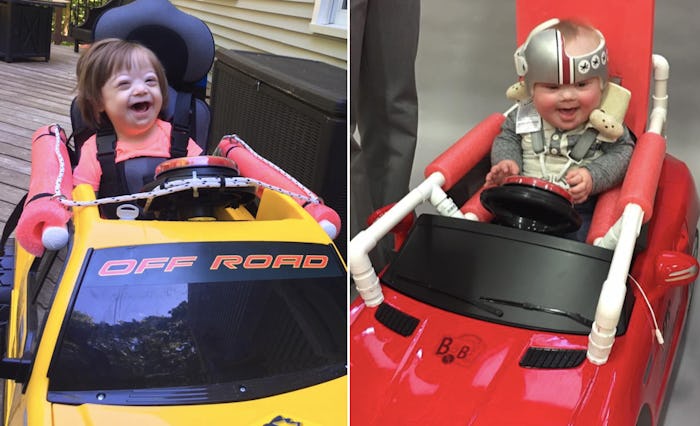People with disabilities incur many hurdles, expenses, and societal challenges. For families and individuals who may not be able to afford all the expenses that come with a disability in the United States, organizations and individuals are facilitating ways to lighten the load. Most recently, as CBS News reported this week, a group of STEM students gifted children with disabilities fully functioning electric cars and the photos are something else, so prepare to smile from ear to ear.
A group of high school and college students from Connecticut came together to build carts from scratch, according to CBS News, trained by the state’s local “Go Baby Go” chapter. First conceived at the University of Delaware in 2012 with chapters now across the U.S., “Go Baby Go” is a research, design, and outreach organization that helps provide independent mobility for children with disabilities.
Introduced first by founder Cole Galloway, the program provides everything from specialized garments that serve as exoskeletons to support children’s movement to special harnesses that allow movement in all directions for individuals with brain injuries.
The organization’s Connecticut chapter, run entirely on volunteers and donations, works with different universities and high schools to run events focused solely on its car projects. Speaking with Romper, Rosie DeFeo, the Connecticut chapter coordinator for Go Baby Go and pediatric physical therapist with a background in adaptive equipment, describes turning the process of miniature cars into avenues of mobility for children as “a lot of fun.”
“This provides a different avenue of fun that is a little bit more accessible for younger kids,” she tells Romper. “The most fun part about it you see the child just light up when they realize that they are actually moving themselves. These are children that cannot maybe move at all and suddenly they can move through space to chase after a sibling or something.”
The new avenues of mobility for children with disabilities changes the world of parents, as well, who previously cared for children with limited mobility and suddenly find themselves running after rambunctious 3-year-olds who keep them on their toes. “Parents are sometimes shocked with how well their kids to right away,” DeFeo says.
The modified cars are given to kids with disabilities at events, where STEM student volunteers from different high schools and universities adjust the cars to fit the receiving children’s needs. More specialized projects that require additional modifications for the children’s needs are also often worked on outside of event days.
DeFeo describes student volunteers working on the cars, “At first they’re excited to just be involved and do a project to make modifications, but when they see it in action it really drives home the importance of why we’re doing what we’re doing. These kids are getting this whole new world of mobility that you might not think about when you jump in to do this project.” She continues, “It’s hard to comprehend it.”
Now, the organization is working on a car that would utilize switches to allow mobility for a child who can only move his or her head. While the organization consistently provides cars for children between 4 months and 6 years of age, DeFeo says they are working on cars that are sizable enough to accommodate even older children in the future.
